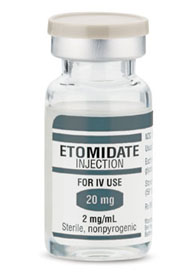Anesthesia and Pain Management
- PRIS – Propofol Infusion Syndrome – can be fatal. Cardiac failure, rhabdomyolysis, and a severe metabolic acidosis.
- Adrenal insufficiency secondary from Etomidate (induction agent) administration may be a cause of hypotension in the post op surgical patient.
- Dexmedetomidine (Precedex)has analgesic properties, sedation, stable respiratory rates, predictable cardiovascular responses.
- Ativan should not be discountinued abruptly after long term use in the ICU patient.
- Heterotopic calcification and myopathies are complications of long term chemical paralysis – thus chemical paralysis for ventilated patients are now not as popular.
- Pulse oximetry readings not as accurate in patients with smoke inhalation.
- Colorimetric CO2 indicator – stomach intubation can still change the color, initially.
- CNS and Cardiotoxity related to local anesthetic use – a concern when intercostal nerve blocks used for multiple rib fractures. Lidocaine info
- Place/Pull epidural catheters, won’t do unless lovenox/heparin sq held for 24 h.
- As doses and duration of Metaclopramide (Reglan – Dopaminergic blocker) increases – neurologic side effects (movement disorders) also increases.
- Oral to IV morphine is 3:1
- Main use for LMA is for short cases in operating room. There are concerns for vomiting and aspiration.
